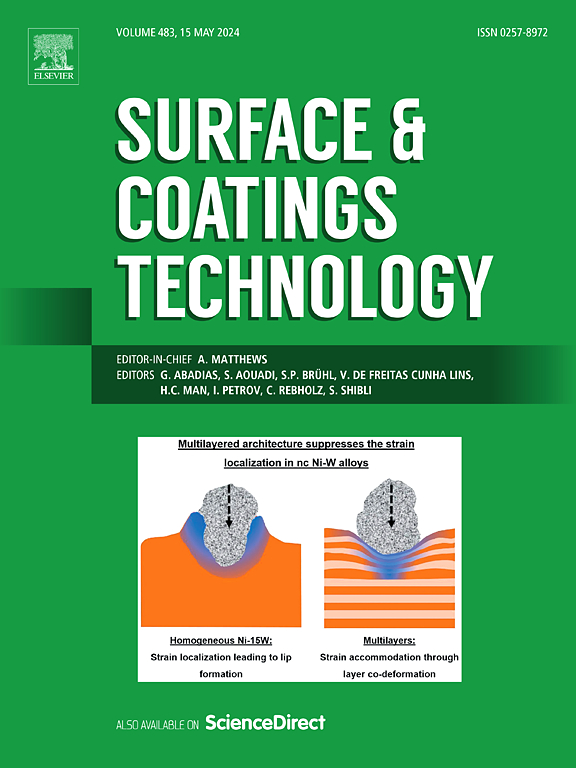Structural, optical property and solar-blind photoelectric detection performance of high-quality Mg-doped β-Ga2O3 thin films prepared using RF magnetron sputtering
IF 5.3
2区 材料科学
Q1 MATERIALS SCIENCE, COATINGS & FILMS
引用次数: 0
Abstract
β-Ga2O3 thin films with different Mg doping concentrations were fabricated on c-plane sapphire and (100) silicon substrates by magnetron sputtering, followed by an 800 °C annealing in Ar for 1 h. Microstructure, surface morphology, film composition, optical property, and the optoelectronic detection performance of the obtained films were systematically investigated. The results show that with the increasing of Mg doping concentration, the surface roughness and average crystallite size of the films first decrease and then increase; the crystallization quality first improves, reaches the best at a doping concentration of 1.01 at%, and then deteriorates; while the band gap gradually increases. The photoluminescent peak intensity first decreases and then increases with the increase of Mg doping concentration, indicating that oxygen-related defects in the β-Ga2O3 films decrease and then increase. The increase in the doping concentration can improve the photoelectric performance, and the device performance is optimal at 1.01 at%, with a high Photo-to-Dark Current Ratio of up to 1.25 × 104, short response and fall times, and exhibits a relatively high responsivity, detectivity, and external quantum efficiency of 2.46 A/W, 1.76 × 1012 Jones, and 1200 %, respectively. In addition, a simple UV optical power density meter was successfully constructed, demonstrating the accurate detection ability of the optical power density. This study provides an important basis for the application of Mg-doped β-Ga2O3 films in the field of ultraviolet detection.
求助全文
约1分钟内获得全文
求助全文
来源期刊

Surface & Coatings Technology
工程技术-材料科学:膜
CiteScore
10.00
自引率
11.10%
发文量
921
审稿时长
19 days
期刊介绍:
Surface and Coatings Technology is an international archival journal publishing scientific papers on significant developments in surface and interface engineering to modify and improve the surface properties of materials for protection in demanding contact conditions or aggressive environments, or for enhanced functional performance. Contributions range from original scientific articles concerned with fundamental and applied aspects of research or direct applications of metallic, inorganic, organic and composite coatings, to invited reviews of current technology in specific areas. Papers submitted to this journal are expected to be in line with the following aspects in processes, and properties/performance:
A. Processes: Physical and chemical vapour deposition techniques, thermal and plasma spraying, surface modification by directed energy techniques such as ion, electron and laser beams, thermo-chemical treatment, wet chemical and electrochemical processes such as plating, sol-gel coating, anodization, plasma electrolytic oxidation, etc., but excluding painting.
B. Properties/performance: friction performance, wear resistance (e.g., abrasion, erosion, fretting, etc), corrosion and oxidation resistance, thermal protection, diffusion resistance, hydrophilicity/hydrophobicity, and properties relevant to smart materials behaviour and enhanced multifunctional performance for environmental, energy and medical applications, but excluding device aspects.
 求助内容:
求助内容: 应助结果提醒方式:
应助结果提醒方式:


